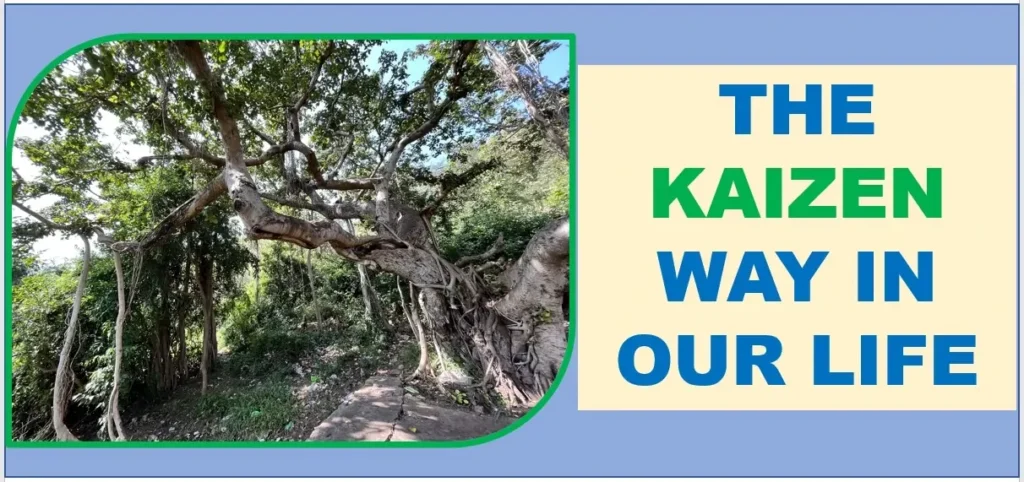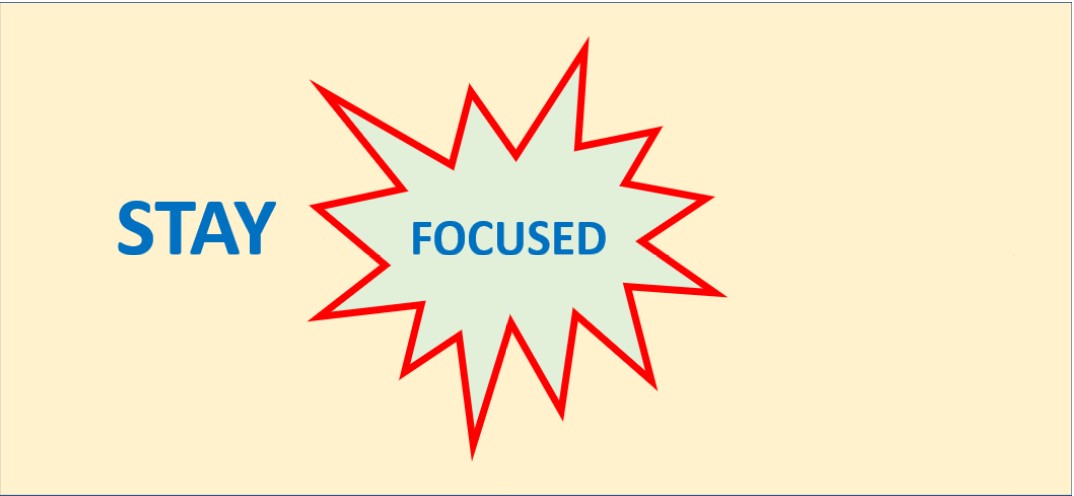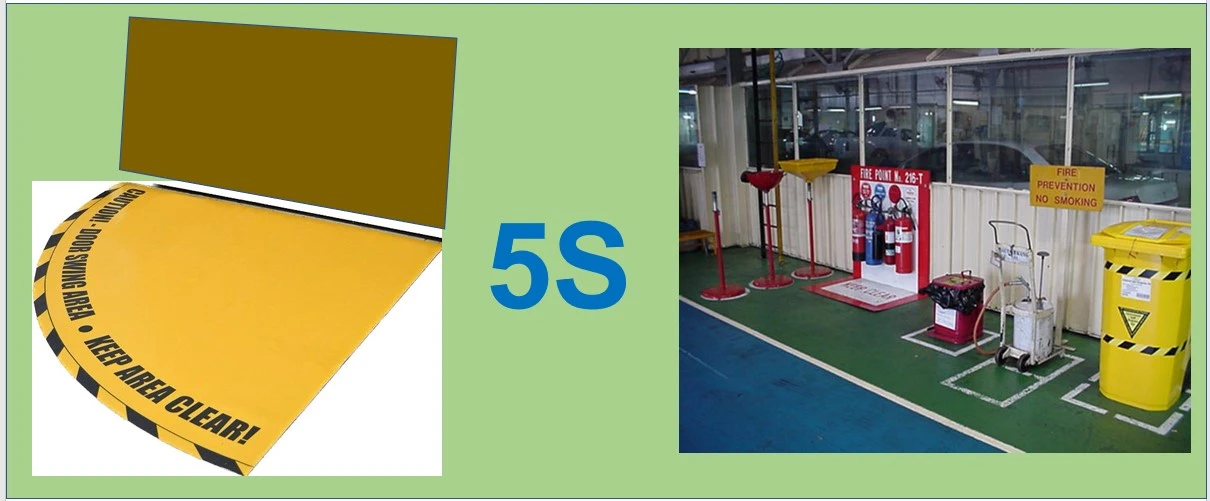
Kaizen is not just about process improvement or waste management, it is a managerial mindset that involves every worker in the organization, trying their best to commit to one small improvement on a daily basis.
HOW KAIZEN IS WAY IN OUR LIFE
- What makes life interesting and exciting, do you know? The motivation to be better than you were the day before.
- We may progress and become the finest versions of ourselves we’ve ever imagined becoming by constantly improving every part of our lives, whether they be personal or professional.
- In the same way, both of our businesses run. Every day, we expect to do better—to make higher-quality products, deliver orders more quickly, attract more users and customers, increase traffic to our website and on social media, give customers the greatest possible experiences, etc.
- Imagine if everyone at your company was focused on improving various aspects of your business so that collectively your business operates better with each passing day.
- This employee focus on continuous improvement in business processes is what Toyota calls Kaizen.
- Kaizen is a lean manufacturing technique that aims to improve process efficiency, quality, reduce waste, increase productivity, safety, and workplace culture.
- Kaizen is about achieving improvements by taking small steps instead of drastic, radical changes. These small increments lead to big improvements over time, which is why Kaizen has been the go-to method for process improvement.
KAIZEN EVOLUTION
Kaizen comes from two Japanese words: Kai (improvement) and Zen (good), which roughly translates to “continuous improvement”.
In business, Kaizen refers to activities that continually improve all functions and involve all employees from the CEO to the assembly line workers. The Kaizen methodology first came into existence during the effort to rebuild Japan after World War II.
At the time, several U.S. business consultants worked with Japanese companies, especially Toyota to improve manufacturing. Their joint efforts, with guidance from American management consultant, W. Edwards Deming, resulted in the development of several new management techniques, one of which was Kaizen.
Since Kaizen involves small steps and incremental changes, it is a low-risk and inexpensive approach. As a result, Kaizen encourages workers to experiment and try out new ideas without the fear of losing out on large capital investments.
Kaizen is not just about process improvement or waste management, it is a managerial mindset that involves every worker in the organization, trying their best to commit to one small improvement on a daily basis.
10 PRINCIPLES OF KAIZEN PROCESS
We shall always improve ourself. Whether is learning something new OR perfecting a skill you already have, THERE IS ALWAYS ROOM FOR IMPROVEMENT in everyone`s life.
- NEVER STOP: There is an area of improvement in everyone`s life, No matter how successful they are.
- ELIMINATE OR REGULAR REVIEW OF OLD PRACTICES: We always have to review our old practices. If required need to modify w.r.t current phase OR eliminate it.
- BE PROACTIVE: We have STOP Hesitating because of possible hurdles that you foresee, and move forwards towards your goal.
- DON`T ASSUME THAT NEW METHOS WILL WORK: Just because of something worked for someone else does not mean that it will necessarily work for you.
- MAKE CORRECTIONS: Recognize the area in your life that can use improvement, and make relevant corrections to help you progress.
- EMPOWER EVERYONE TO SPEAK EVERYONE: Encourage your friends and family to make suggestions if they see things that you could work on.
- CROWDSOURCE: Learn from other people and get some new ideas on things you can add to your routine to create Continuous Improvements.
- PRACTICE ROUTE CAUSE ANALYSIS METHODS: By continuing to ask yourself WHY? OR OTHER ROUTE CAUSE ANALYSIS METHOD, so that real reason behind the problem can be identified
- ECONOMICAL SOLUTION: Eliminate buying new thing, Try to Reuse, Reutilize, Modify & save money. Need to track the money saved on timely manner.
- DON’T STOP: Never consider yourself to be finished. Improvement has no limits, and can be continued on an infinite level.
06 STEPS TO IMPLEMENT KAIZEN IDEAS AT WORKPLACE
- TRAINING & EDUCATION OF EMPLOYEES
Remember, the implementation of Kaizen involves the collective effort of the organization and not just upper management.
Start off by educating your employees on the concept of Kaizen and how it can help them improve their work as well as life in general in a big way.
Management plays a key role in here in training the staff, explaining them the “why” behind the requirement of new changes, and encourage them to participate.
- IDENTIFY THE PROBLEM OR OPPORTUNITY
Once employees are on board with the concept of Kaizen, take their valuable opinions on what can be done to improve an existing process or where lies new opportunities. Create a list of problems and opportunities.
- BRAINSTORM SOLUTIONS
Once you know what to improve first, it’s time is to come up with a collective solution. Encourage employees to offer solutions. Use quality circles, suggestion boxes, or Kaizen boards to facilitate communication between employees and management.
- TEST THE SOLUTION
Once you decide upon the winning solution, its time to roll it out. Start with small steps and implement the solution gradually. Make sure everyone is on board and know why the particular solution was chosen to improve the process.
- ANALYSIS RESULTS
Create milestones or checkpoints so as to keep tabs on whether the solution is being implemented correctly. Measure how successful the change has been and document the learnings.
- STANDARDIZE THE SOLUTION
If the results are what you hoped for, it is time to standardize the solution company-wide.
One of the most important steps in the Kaizen methodology is making sure that each and every employee participates in the process improvement process.
Kaizen only works when employees at all levels of the company work together proactively to achieve incremental improvements.
The cycle of kaizen activity can also be defined as: “Plan → Do → Check → Act”. This is also known as the Shewhart cycle, Deming cycle, or PDCA cycle.
ADVANTAGES OF KAIZEN PROCESS
- Improves the work efficiency
- It helps scrutinize processes so that mistakes can be minimized
- Kaizen Promotes the teamwork
- Since mistakes are minimized, fewer resources can be spent on inspections & finally saves the cost & resources
- Improves employee morale
- Encourages critical thinking
DISADVANTAGES OF KAIZEN PROCESS
- Training to the old mindset employees on a new management style can be a bit of a challenge. It is not easy to change people’s mindset
- If desired results are not visible, employees can get discouraged.
___________________________ XXXXX _____________________________
Note: Above views are purely written based on my own individual experience through various industries & based on that above points have been came out. Also gone through various books & reference sites before conclude. Hence before implementing, pls. review & decide whether it suits/align to your requirements or not.







